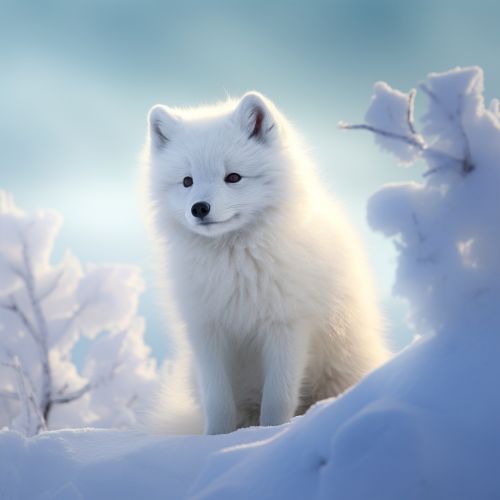Thermal adaptation in animals
Introduction
Thermal adaptation in animals refers to the physiological and behavioral changes that animals undergo to survive in different thermal environments. This process is crucial for the survival of species in various habitats, ranging from the frigid Arctic to the scorching deserts.


Physiological Adaptations
Physiological adaptations involve changes at the cellular and systemic levels that enable an animal to function efficiently in its thermal environment. These adaptations can be structural, biochemical, or metabolic.
Structural Adaptations
Structural adaptations are physical changes in an animal's body that enhance its ability to regulate body temperature. For instance, animals living in cold environments often have compact bodies and short extremities to minimize heat loss, a principle known as Allen's rule. Conversely, animals in hot environments tend to have elongated bodies and extremities to maximize heat dissipation.
Biochemical Adaptations
Biochemical adaptations involve changes in the molecular processes of an animal's body to cope with temperature extremes. For example, animals in cold environments often have unsaturated fatty acids in their cell membranes to maintain fluidity at low temperatures, a phenomenon known as Homeoviscous adaptation.
Metabolic Adaptations
Metabolic adaptations refer to changes in an animal's metabolic processes to regulate body temperature. For instance, animals in cold environments often increase their metabolic rate to produce more heat, a process known as Non-shivering thermogenesis. On the other hand, animals in hot environments often decrease their metabolic rate to reduce heat production.
Behavioral Adaptations
Behavioral adaptations are actions taken by animals to regulate their body temperature. These can include changes in activity patterns, habitat selection, and social behaviors.
Activity Patterns
Many animals adjust their activity patterns to avoid temperature extremes. For example, desert animals often exhibit crepuscular or nocturnal behavior to avoid the intense heat of the day. Similarly, Arctic animals may limit their activity during the coldest parts of the day or year.
Habitat Selection
Animals often select habitats that help them regulate their body temperature. For instance, some desert animals burrow underground during the day to escape the heat, while Arctic animals may hibernate in dens to conserve heat during the winter.
Social Behaviors
Some animals use social behaviors to regulate their body temperature. For instance, Emperor penguins in Antarctica huddle together to conserve heat, a behavior known as huddling.
Evolution of Thermal Adaptation
The evolution of thermal adaptation in animals is driven by natural selection. Animals that are better adapted to their thermal environment are more likely to survive and reproduce, passing on their advantageous traits to their offspring. This process, known as adaptive evolution, leads to the development of diverse thermal adaptations in different species.
Implications of Climate Change
Climate change poses a significant threat to thermal adaptation in animals. Rapid changes in temperature can outpace the ability of animals to adapt, leading to population declines or even extinction. Therefore, understanding thermal adaptation is crucial for predicting the impacts of climate change on biodiversity and for developing strategies to conserve species.
